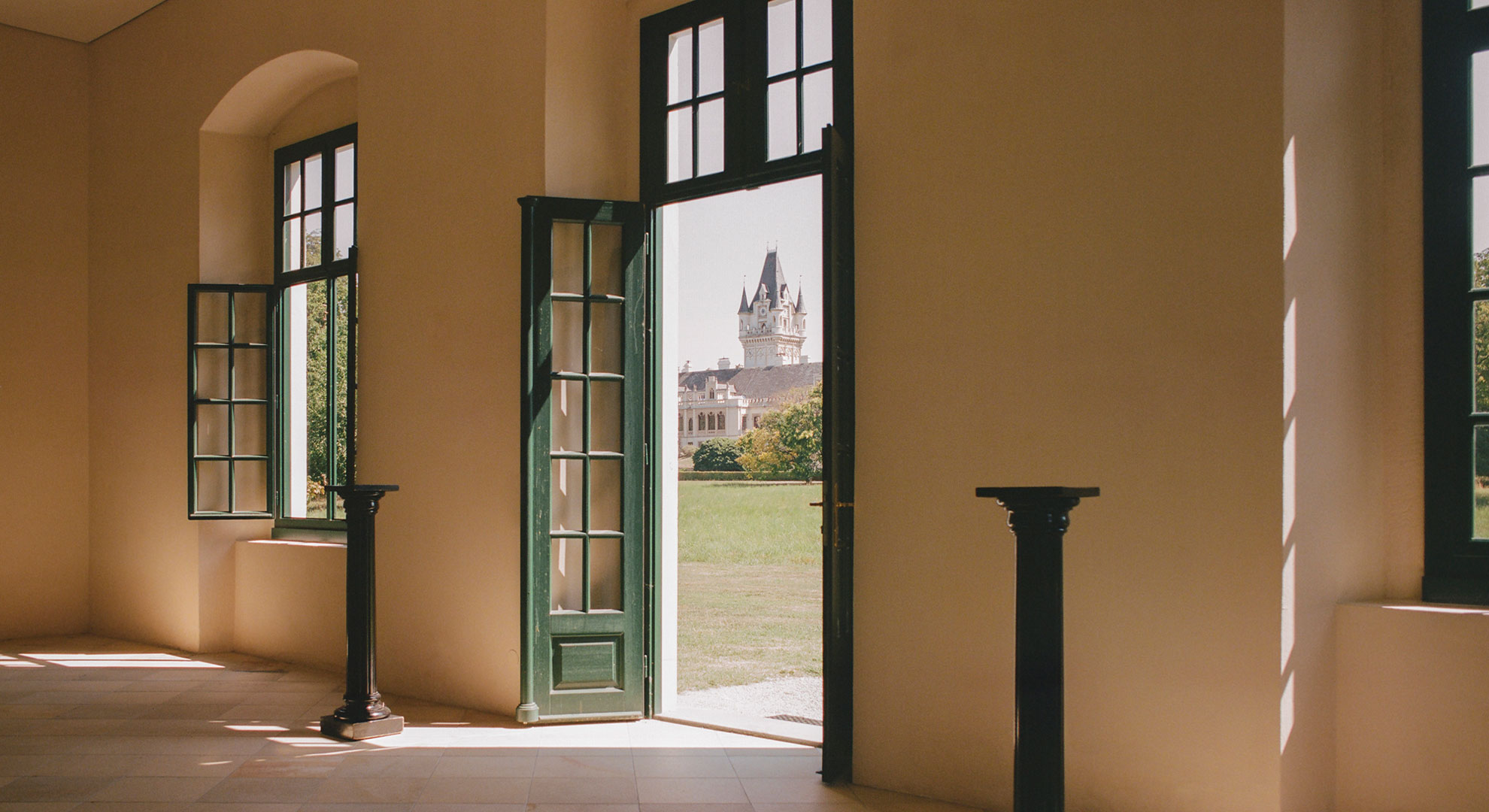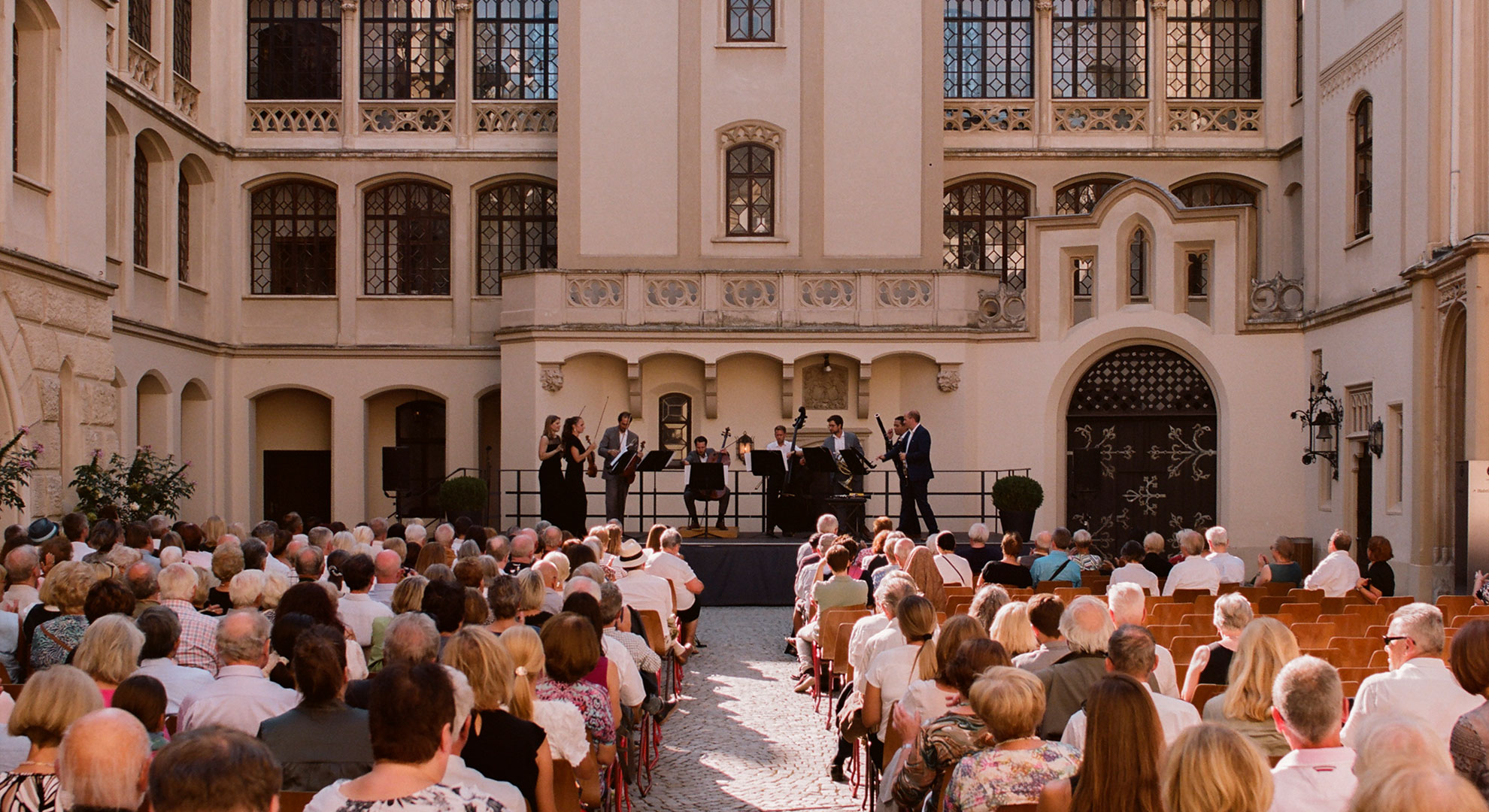© Lisa Edi
Opening hours & Guided tours
Grafenegg Castle has gone a long way from the mill on the Kamp river to becoming an international festival venue.
On our guided castle tour we inform you about the construction and the architectural features of the castle. On our park tour you can learn more about the 19th-century landscape garden and its characteristics as well as about the original baroque garden.
Opening hours
At the moment Grafenegg Castle is not open for tours.
From June 24 to September 3 inclusive, you can visit the castle individually or as part of a guided tour.
Open:
Sat. and Sun. 11.30 - 5.30 p.m.
Guided tours: Sat. and Sun. 3.00 p.m.
The park of the Grafenegg Castle Grounds is accessible throughout the whole year, with the exception of days with concerts at the open-air stage Wolkenturm. 3 hours prior to the concert, an entry is possible only for holders of a valid concert ticket.
Important information
Please note that dogs are not allowed in Grafenegg Castle (also during guided tours and during the castle concerts). Assistance dogs with appropriate proof are excepted.
History
Seven centuries of history can be seen in the architecture of Grafenegg Castle. Extended in the 19th century, it has become Austria’s most important example of historicism. Here you can find stylistic traces from Gothic through Baroque and Biedermeier to elegant Neo-gothic.
With its soaring tower, grandiose façades, stylish staircases, atmospheric arcades and attractive chapel, Grafenegg has become an emblem of Lower Austria. Want to know more about Grafenegg's colourful history? Join us for a guided tour through the castle and/or the castle grounds or find your own way through the historical chambers and alleys of Grafenegg Castle!
The Metternich-Sándor family
August Ferdinand, Earl Breuner-Eneckevoirth (1796–1877) built Schloss Grafenegg in its current form. As his son, August Johann (1828–1894), had only daughters, Schloss Grafenegg passed into the family of Viktor II, Duke of Ratibor and Prince of Corvey (1847–1929) upon his marriage with the oldest daughter Maria (1856–1929).
The second son of the 3rd Duke of Ratibor and Prince of Covey (1879–1945), Franz Albrecht (1920) was adopted by his Great-Aunt Clementine, Princess of Metternich-Sándor (1870–1963). She was a granddaughter of the Austrian Chancellor Clemens Wenzel Lothar Prince of Metternich-Winneburg (1773–1859), who in 1815, with the Wiener Congress, influenced the course of European history.
As his older brother Viktor, Crown Prince of Ratibor and Corvey, met an untimely death in battle in 1939 aged 23, Franz Albrecht inherited the German, Austrian and Hungarian properties belonging to his father on the latter’s death in 1945.
The current owner of the Schloss Grafenegg estate, Tassilo Metternich-Sándor (1965), married to Clarissa Countess of Toerring-Jettenbach, manages the enterprises of Schloss Grafenegg. His father Franz Albrecht Metternich-Sándor (1920– 2009) initiated the tradition of holding major artistic events and exhibitions in Grafenegg in 1971.



